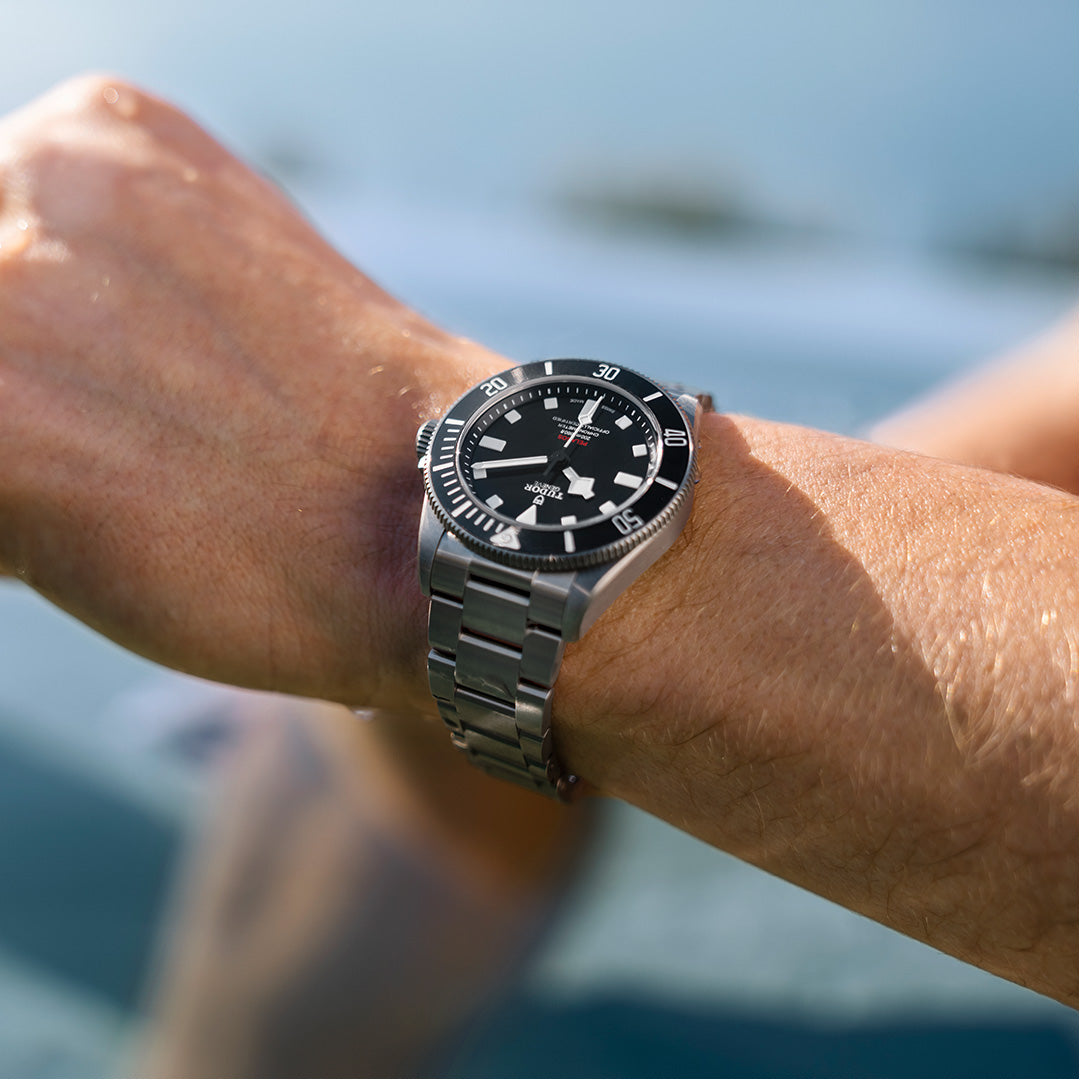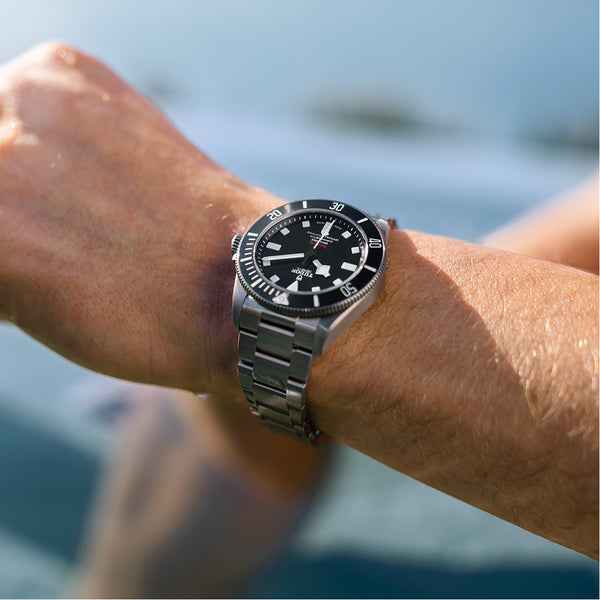
If you ask the internet for an opinion, you’ll get one. And then another. And you’ll likely walk away even more confused than before. Opinions run high and varied when it comes to watches made for diving, so allow us to share with you 5 considerations before buying your first (or next) dive watch.

Depth Rating
This is often the first number people’s eyes go to when looking at dive watches. After all, if it can’t handle the dive, it’s not a very good dive watch, right? Most dive watches have a depth rating of 200m (a bit over 600 feet). That covers just about everybody except for a handful of the most elite divers in the world. If you’re looking at a watch that can handle 200m, you’re holding a watch that will be more than adequate for a dive.
Diving Specifications
This is the topic where the pros (and wannabe pros) start to tangle, and folks get unnecessarily confused. It’s common for some to confuse specifications with standards, and standards with must-haves. If, for example, your watch doesn’t have a luminous pip at the zero point, or a luminous element for each 5-minute marker, don’t fret. You haven’t violated any “law of diving.” Specs are an ever-evolving piece of the puzzle.

Key Practical Elements
In addition to the depth rating, you’ll want to pay attention to three important things. Bezel clarity and lume glow. Having a bezel that is clear with easily readable numbers is going to be imperative. You’re keeping track of life-critical things like oxygen supply, so this is key. Lume glow is particularly important for deeper dives, night dives, or murky water. The ideal lume is one that shines brightly and for a long time. Most divers also carry a flashlight when they know light will be limited.
Strap Selection
The strap is vital, and you’ll often find dive watches that come with a secondary strap specifically for diving, or a dive extension so the strap will fit over a wetsuit. The choice you make will depend on where you dive and what you are wearing. Wetsuits come in varying thicknesses, and drysuits are even thicker. Warmer dives might have a thinner wetsuit, or no suit at all. The extension system from the Tudor Pelagos is a stand-out in its category. It allows you to put the watch around your forearm in a drysuit. But it’s hard to top a long rubber strap that can be easily swapped out on dive day.
Choosing Color for Visibility
Dive watches are often quite colorful, but color behaves differently underwater. Colors with longer wavelengths penetrate less the deeper you go. For example, red fades around 15 feet. Orange begins to fade at 25 feet, while yellow makes it to 45 feet, and green holds strong up to 75 feet. As you dive deeper, these colors tend to turn gray. The color is for good looks on the surface. Underwater, you’re going for clarity.
Dive watches often come with other attractive features like a depth indicator, helium escape valve, and locking bezel mechanism. While these features look great, and possibly add some functionality, they are mostly unnecessary. Don’t get too distracted by bells and whistles. Dive watches do not have to be bulky hunks of metal with excessive contraptions. They are there to provide an important function when diving, and still look good later at dinner.
One parting bit of advice: always rinse your watch after a dive with clean, fresh water. This will clean away grit and salt that build up and keep your watch working great. Be sure you regularly bring your watch to a qualified jeweler for regular servicing and always ask for a pressure test to be sure your watch is ready for your next dive.
When you’re ready to pick out a solid dive watch you’ll be proud to wear in and out of the water, stop by our Palo Alto location and our staff will be happy to show you wonderful options.


